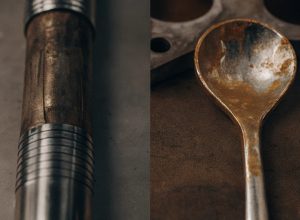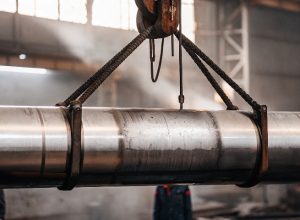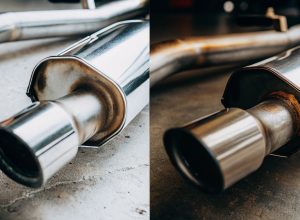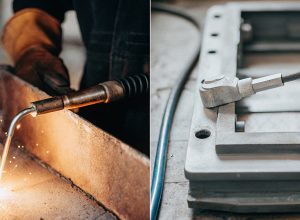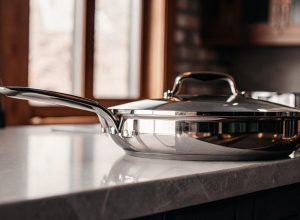Are you searching for an ultra-premium material, wondering if something as exotic as a gold-titanium alloy is real? Let’s explore the facts behind this fascinating metallurgical possibility.
Yes, gold-titanium alloys1 exist, primarily as specific intermetallic compound2s like beta-Ti3Au3. They are developed for highly specialized applications like biomedical implants and luxury goods, but are not commercially available industrial materials due to their extreme cost and complex manufacturing processes.
So, we know this alloy is real in a scientific sense. But the gap between a lab discovery and a material you can actually use in a product is huge. I’ve seen this many times in my work. A material might have amazing properties on paper, but making it reliably and affordably is a completely different challenge. This is where the practical side of engineering comes in. Let’s look closer at what it really means for a gold-titanium alloy to exist.
Does gold titanium alloy exist?
You hear about amazing new materials, but when you look for them, they are nowhere to be found. Is gold-titanium alloy just a theory, or is it actually real?
Yes, gold-titanium alloys absolutely exist, but not in the way you might think. The most famous example is a specific compound, beta-Ti3Au (3 parts titanium, 1 part gold). It is not a common industrial alloy but a specialized material studied for its hardness and biocompatibility.
In my work here in Baoji’s Titanium Valley, we focus on producing reliable, large-scale titanium ingots that meet global standards like ASTM. A gold-titanium alloy is a different world entirely. It’s more of a laboratory creation. Researchers discovered that when you alloy gold and titanium in a 1-to-3 atomic ratio, you create an intermetallic compound that is nearly four times harder than pure titanium. This material has incredible potential for things like long-lasting medical implants or high-end watch cases. However, creating it isn’t simple. It requires precise metallurgical processes4 to form the specific ordered crystal structure. It is not something you can just melt and pour. This is why you will not find it in a standard materials catalog next to Grade 5 titanium. It exists, but only in very niche, high-value applications where performance justifies the huge cost.
| Feature | Standard Titanium (e.g., Grade 5) | Gold-Titanium (beta-Ti3Au) |
|---|---|---|
| Availability | Commercially widespread | Custom, lab-scale only |
| Primary Use | Aerospace, industrial, medical | High-end biomedical, luxury |
| Cost | Moderate | Extremely high |
| Key Property | High strength-to-weight ratio | Extreme hardness, biocompatible |
| Standardization | ASTM, ASME, ISO | None |
Can you make a gold titanium alloy?
Are you thinking about creating this unique material for a project? You might assume you can just melt gold and titanium together. It is much more complicated than that.
Yes, you can make a gold-titanium alloy, but it requires advanced manufacturing techniques like vacuum arc melting or powder metallurgy. You cannot simply mix them due to different melting points and titanium’s high reactivity, which requires a controlled, oxygen-free environment.
Making a high-quality alloy is all about control. At our facility, we use large Vacuum Arc Remelting (VAR) furnaces to produce our titanium ingots. This process removes impurities and ensures a consistent structure. For a gold-titanium alloy, this level of control is even more critical. Gold melts at 1064°C, while titanium melts at a much higher 1668°C. If you try to melt them in a simple furnace, the gold could vaporize before the titanium even becomes liquid. On top of that, hot titanium reacts aggressively with oxygen, so the entire process must happen in a vacuum or an inert argon atmosphere to prevent contamination. You would typically use a specialized arc melter to create a small, homogenous button of the alloy. Then, you need specific heat treatment cycles to encourage the atoms to arrange themselves into the hard beta-Ti3Au structure. It is a precise, multi-step laboratory process.
Key Challenges in Production
| Challenge | Description | Impact on Manufacturing |
|---|---|---|
| Melting Point Mismatch | Gold melts at 1064°C; Titanium at 1668°C. A nearly 600°C difference. | Requires specialized melting equipment to prevent vaporization. |
| Titanium’s Reactivity | Titanium readily absorbs oxygen and nitrogen when hot, making it brittle. | Melting must occur in a vacuum or inert gas (argon) atmosphere. |
| Compound Formation | The desired hard properties come from the specific beta-Ti3Au intermetallic compound. | Requires precise compositional control and post-melt heat treatment. |
| Cost of Materials | Gold is one of the most expensive metals. | Makes the alloy economically unfeasible for nearly all applications. |
Can you get gold titanium?
You have a project that could benefit from this unique alloy’s properties. But trying to find a supplier feels like an impossible task. So, how can you actually get it?
You cannot get gold-titanium alloy from a normal metal supplier. Sourcing this material means commissioning a custom batch from a specialized metallurgical research lab or university. It is a made-to-order research material, not an off-the-shelf product with a price list.
As a product manager, Lisa, you are familiar with a clear procurement process. You request a quote for a material like Grade 2 titanium, you receive a price, and you get a material test report (MTR) tracing it back to an ASTM standard. For a gold-titanium alloy, that entire commercial framework disappears. You are stepping into the world of contract research. I have seen this with some of our boutique aerospace clients who request non-standard compositions. The process begins not with a purchase order, but with a research proposal. You would partner with a facility that has the right equipment and expertise. They would develop a process, create small test samples, and perform extensive analysis. The cost would include raw materials, machine time, and the salaries of the scientists involved. You are not buying metal; you are funding a small R&D project. The lead time would be months, not weeks, and the cost per gram would be astronomical compared to any standard industrial metal.
Would a gold-titanium alloy be magnetic?
You are designing a component for a sensitive device where magnetic interference is a major concern. Could this exotic alloy be a solution, or would it introduce new problems?
A gold-titanium alloy would be non-magnetic. Its base metals, gold (diamagnetic) and titanium (paramagnetic), are not ferromagnetic. Therefore, their alloy will not be attracted to magnets, making it suitable for applications requiring EMI shielding or use in high-magnetic-field environments.
In many industrial and medical applications, magnetism is a critical factor. We produce a lot of titanium and zirconium alloys that are chosen specifically because they are non-magnetic. It’s important to understand what "non-magnetic" means here. Some materials, like iron, are ferromagnetic—they are strongly attracted to magnets. Titanium, on the other hand, is paramagnetic. This means it is very weakly attracted to a magnetic field, but the effect is so tiny that for all practical purposes, it’s considered non-magnetic. Gold is diamagnetic, meaning it’s actually weakly repelled by a magnet. When you create an alloy from these two metals, you do not create ferromagnetism. The resulting gold-titanium alloy remains non-magnetic. So, if Lisa were considering it for sensitive chemical equipment where magnetic fields are a concern, the material would pass that test perfectly, just as standard titanium grades do.
Magnetic Properties of Key Metals
| Metal | Magnetic Type | Behavior Near a Magnet | Application Implication |
|---|---|---|---|
| Iron | Ferromagnetic | Strongly attracted | Unsuitable for MRI, sensors |
| Titanium | Paramagnetic | Very weakly attracted (practically none) | Excellent, non-magnetic |
| Gold | Diamagnetic | Very weakly repelled | Excellent, non-magnetic |
| Gold-Titanium Alloy | Non-Magnetic | No significant attraction or repulsion | Suitable for all non-magnetic uses |
Conclusion
Gold-titanium alloys are real, non-magnetic materials with amazing hardness. However, they are complex, extremely expensive laboratory creations, making them impractical for almost all commercial and industrial applications today.
-
Explore the unique properties and uses of gold-titanium alloys in specialized fields. ↩
-
Learn about intermetallic compounds and their unique properties in metallurgy. ↩
-
Learn about the beta-Ti3Au compound and its remarkable hardness and biocompatibility. ↩
-
Understand the complex processes involved in producing high-quality gold-titanium alloys. ↩



[^5] for Specialty Alloys A vacuum arc melting furnace used for producing high-purity specialty alloys.](https://titonestmetal.com/wp-content/uploads/2025/07/yes-you-can-make-a-gold-titanium-alloy-but-it-.jpg)



